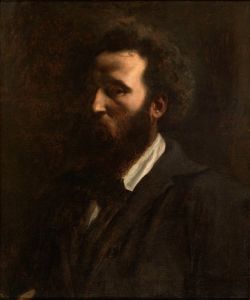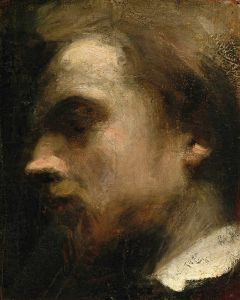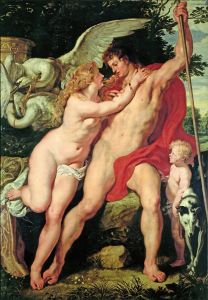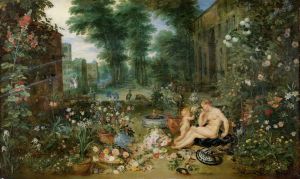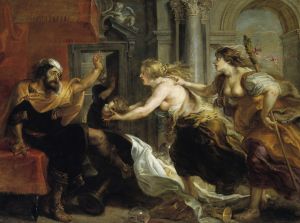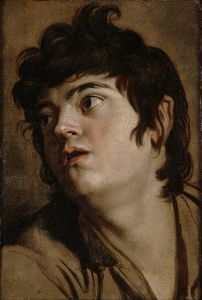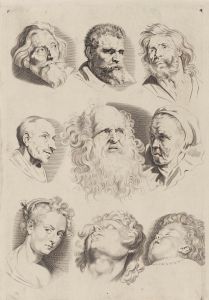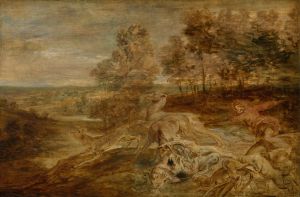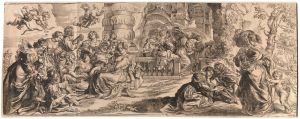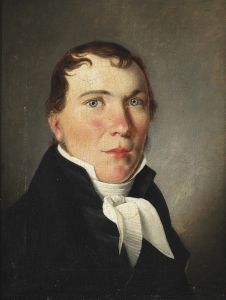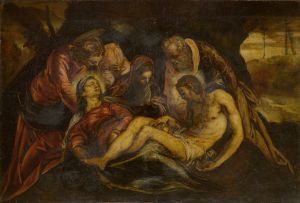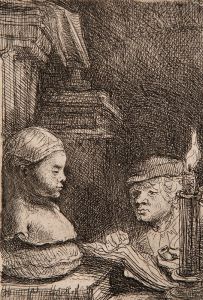
The Lamentation over the Dead Christ
A hand-painted replica of Peter Paul Rubens’s masterpiece The Lamentation over the Dead Christ, meticulously crafted by professional artists to capture the true essence of the original. Each piece is created with museum-quality canvas and rare mineral pigments, carefully painted by experienced artists with delicate brushstrokes and rich, layered colors to perfectly recreate the texture of the original artwork. Unlike machine-printed reproductions, this hand-painted version brings the painting to life, infused with the artist’s emotions and skill in every stroke. Whether for personal collection or home decoration, it instantly elevates the artistic atmosphere of any space.
Peter Paul Rubens, a prominent Flemish Baroque painter, created "The Lamentation over the Dead Christ" around 1606-1607. This painting is a poignant depiction of the biblical scene where Christ's followers mourn his death after the crucifixion. Rubens, known for his dynamic compositions and vibrant use of color, brings this emotional moment to life with his characteristic style.
The painting captures the Virgin Mary, Mary Magdalene, and John the Evangelist gathered around the lifeless body of Christ. Rubens masterfully conveys the sorrow and despair of the figures through their expressive gestures and facial expressions. The Virgin Mary is often depicted with a look of profound grief, her hands gently supporting her son's lifeless body. Mary Magdalene, traditionally shown with long flowing hair, is often portrayed in a state of emotional turmoil, while John the Evangelist might be depicted with a more subdued expression of sorrow, reflecting his role as a steadfast supporter of Mary.
Rubens' use of color and light in "The Lamentation over the Dead Christ" is particularly noteworthy. The artist employs a rich palette to highlight the contrast between the divine and the mortal. The luminous skin tones of Christ's body stand out against the darker, more somber background, drawing the viewer's eye to the central figure of the composition. This use of chiaroscuro, a technique that plays with light and shadow, enhances the dramatic effect of the scene.
The composition of the painting is carefully arranged to guide the viewer's gaze across the canvas. Rubens uses diagonal lines and the positioning of the figures to create a sense of movement and tension, leading the eye from one mourner to the next and ultimately focusing on the figure of Christ. This dynamic arrangement is characteristic of Rubens' work and reflects his ability to convey complex emotional narratives through visual art.
Rubens was heavily influenced by his studies in Italy, where he was exposed to the works of Renaissance masters such as Michelangelo and Caravaggio. These influences are evident in "The Lamentation over the Dead Christ," particularly in the anatomical precision and the dramatic use of light and shadow. Rubens' ability to synthesize these influences with his own unique style helped establish him as one of the leading artists of the Baroque period.
"The Lamentation over the Dead Christ" is housed in the Royal Museum of Fine Arts in Antwerp, Belgium. It remains an important example of Rubens' religious works and continues to be studied for its artistic and historical significance. The painting not only reflects Rubens' technical skill and emotional depth but also his deep engagement with religious themes, which was a central aspect of his oeuvre.
In summary, Peter Paul Rubens' "The Lamentation over the Dead Christ" is a masterful representation of a pivotal moment in Christian iconography. Through his expert use of composition, color, and light, Rubens captures the profound grief and humanity of the scene, creating a work that resonates with viewers both emotionally and aesthetically.






